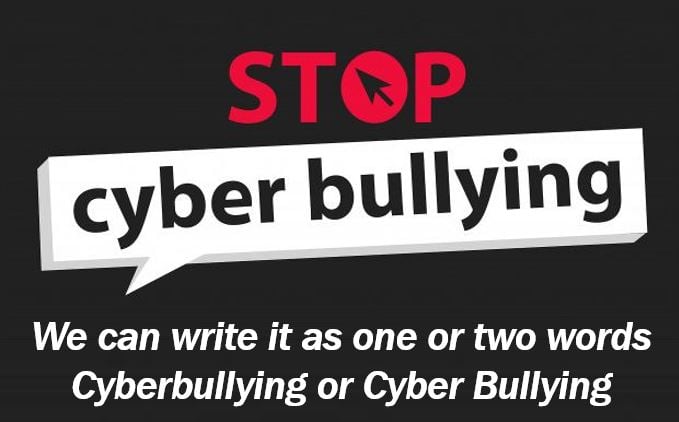Cyberbullying is bullying using electronic means. We also use the terms cyberharassment and online bullying. Before the advent of the Internet, this type of bullying did not exist. It is common today among schoolchildren, teenagers, and college students. Workplace bullying and harassment may also take place online, i.e., in the form of cyberbullying.
As technology permeates more aspects of daily life, the potential venues for cyberbullying expand, with new platforms and communication tools constantly emerging.

The Cambridge Dictionary has the following definition of the term:
“The activity of using the internet to harm or frighten another person, especially by sending them unpleasant messages.”
Cyberbullying consists of two words
The term consists of two words: 1. Cyber, and 2. Bullying. What do these two words mean?
-
Cyber
Cyber is short for cybernetics. Cybernetics is the scientific study of how data is communicated in electronic devices such as computers, compared to how this is done by the brain and nervous system.
The following quote comes from a Market Business News article:
“The term ‘cyber’ is an adjective or prefix which means relating to or characteristic of information technology, virtual reality, and computers. If I say that today we live in a cyber age, I mean an age of computers, virtual reality, or information technology.”
-
Bullying
A bully is a person who intimidates or harms seemingly vulnerable or weaker individuals – easy prey. The behavior, which hurts the victim either physically, mentally, or emotionally, is habitual and done on purpose.
In a Market Business News article, we made the following comment:
“The bully may target individuals because of their physical appearance, race, disability, religion, academic performance, sexual orientation, gender, voice, etc.”
“The perpetrator may use threatening behavior, call people names, physically assault them, humiliate them socially, or take part in cyberbullying.”
Cyberbullying – a growing problem
Cyberbullying, cyberharrasment, and trolling have become serious problems worldwide. Victims become scared, frustrated, upset, anxious, angry, clinically depressed, and in some cases even suicidal.
Digital literacy and awareness programs are increasingly becoming part of educational curriculums to equip young people with the skills to recognize and deal with cyberbullying effectively.
-
Trolling

Trolling is done by a troll. Troll is an Internet slang term for somebody who deliberately tries to instigate hostility, arguments, or conflict in social media platforms, online games, and other media. Trolls may target, for example, forums, chat rooms, social networks, emails, or YouTube’s comment section.
Cyberbullying can potentially be just as harmful as physical bullying. The victim of a physical bully at school is away from it all at home – home is a refuge. The victim of a cyberbully, on the other hand, continues suffering every time he or she goes online, which may be at home.

What can the victim do?
- Do not reply to the cyberbully. Retaliating may make matters worse.
- Try not to let the rude comments hurt you personally or undermine your beliefs and views. The comments are not true and usually reflect problems that the bully has.
- Block messages.
- If you can, take a break from technology.
- Keep a record of all hurtful messages, photographs, false profiles, etc. The evidence may be useful one day.
- Report it to a trusted adult. This person may be, for example, a family member, teacher, counsellor, doctor, or psychologist.
Video – What is Cyberbullying?
This educational video, from our sister channel on YouTube – Marketing Business Network, explains what ‘Cyberbullying’ means using simple and easy-to-understand language and examples.
